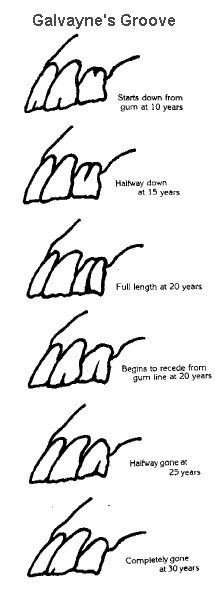Horse Remedies
|
These horse remedies are offered strictly for your interest. For serious conditions, or if a condition persists or worsens while using home remedies, quit using them and consult your veterinarian. For advice on your own horses, please contact your local veterinarian. This article is intended only as a suggestion that home horse remedies may be a simple adjunct to pharmaceutical preparations, use at your own risk.
WITCHES BREW remedy for swelling or soreness of any kind do not use on open wounds because it really burns 1 PART ABSORBINE 1 PART DMSO 2 PARTS WATER A SMALL AMOUNT OF TABLE SALT (LIKE A TEASPOON FULL FOR 1 QUART) do not substitute Epsom salts as it causes the wrong kind of chemical reaction APPLY WITH A WIRE HANDLED DISH MOP UNTIL AREA IS WET avoid contact with your own skin Fistula Remedy 1/2 gal milk of magnesia 1 bottle mercurochrome mix and add to injured area to help drain and reduce pain have used Betadine in place of mercurochrome Fly repellant ---no toxic ingredients In a quart sprayer container: 1" white vinegar 1" blue Dawn liquid dish washing detergent fill with water To Toughen Horses' Backs This technique is an old one used by teamsters for years to toughen the horses skin where the harness made contact. It works equally well for saddle horses that are used hard. Mix approximately one cup table salt with one gallon water. Apply liberally daily to the under-saddle and girth areas after the horse is unsaddled. Combine faithful use of this wash with a good clean saddle pad and blanket and a properly fitting saddle. For the "Scratches" Try Desitin ® Ointment. Apply full strength for a couple of days. Twister Heller had very good luck. "Absolutely killed it and in 2 days well healed!!!" A veterinarian from Colorado, said that when he first started to practice, a mentor of his applied a mixture of used crank case oil and 10% iodine for scratches with good results. 
How to Tell a Horse's Age by its Teeth
This method is very effective on horses between 10 and 30. A groove, called Galvayne's groove, starts down the side of the rear upper incisors at the age of ten. It is half way down at 15, all the way at 20. It begins to recede at 20 and is gone again at 30. The forward angle of the incisors also becomes more prominent as the horse ages. See diagram below. |
|
